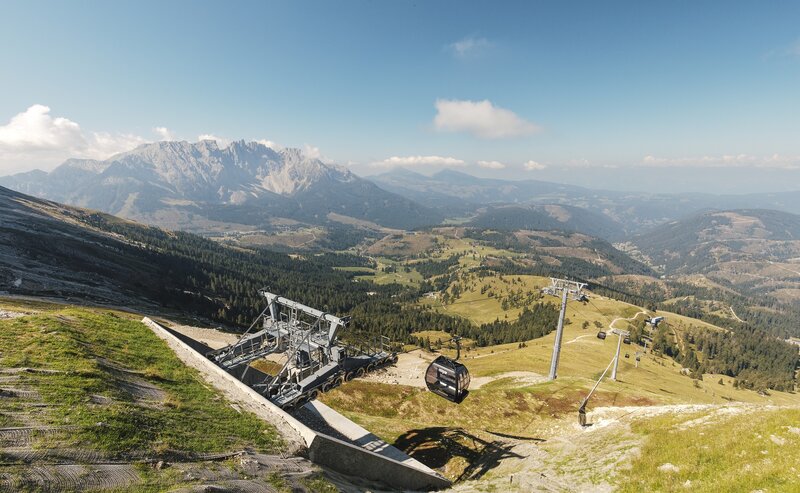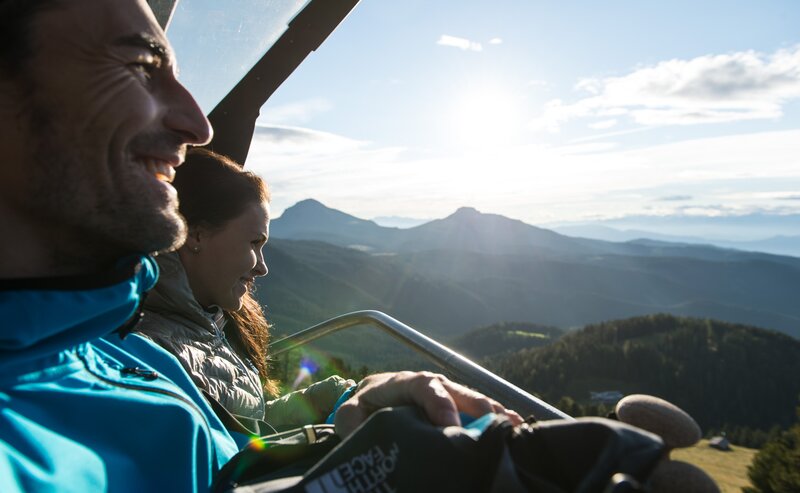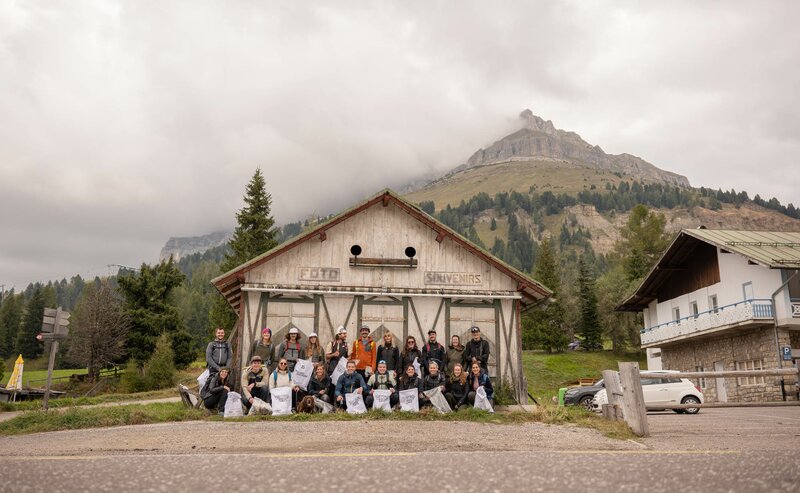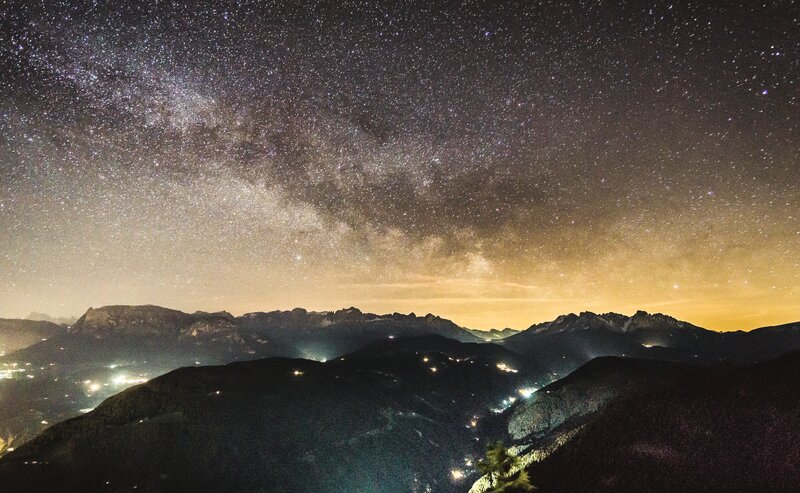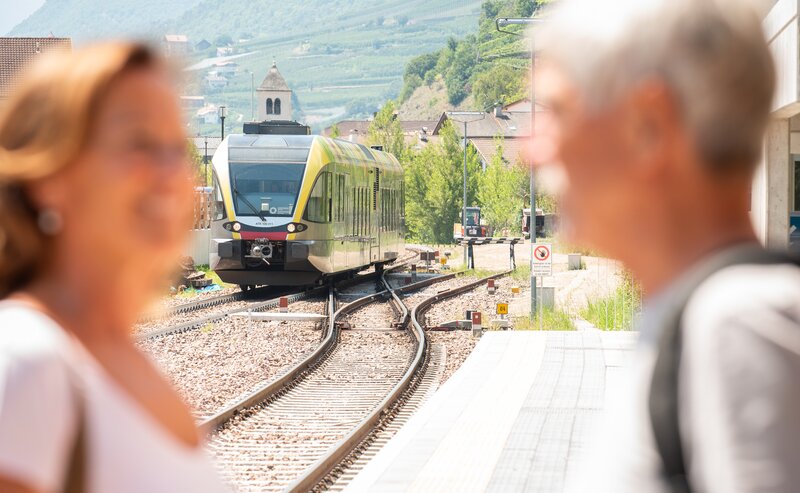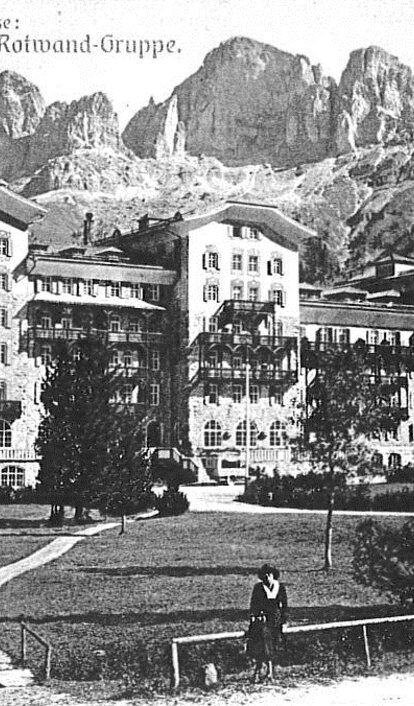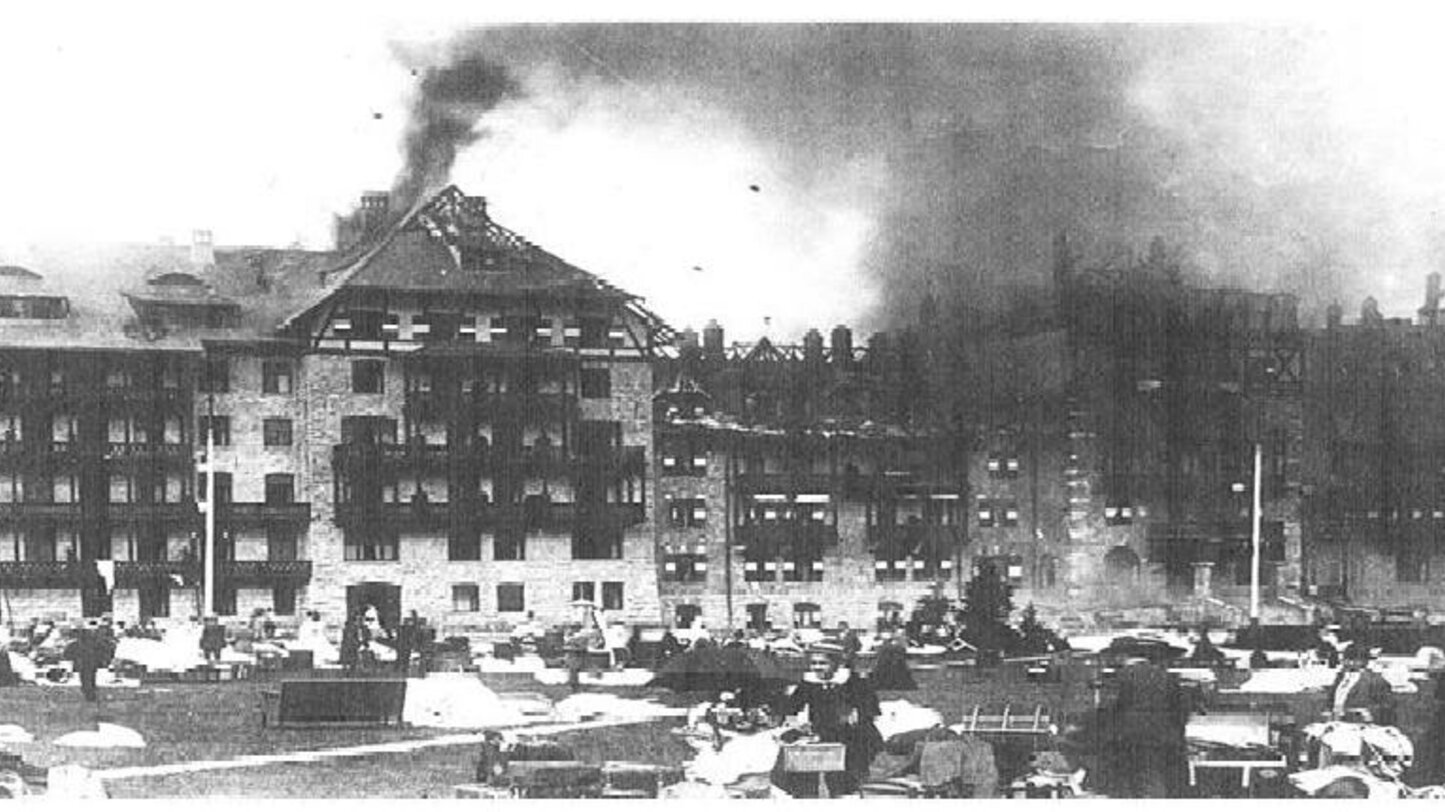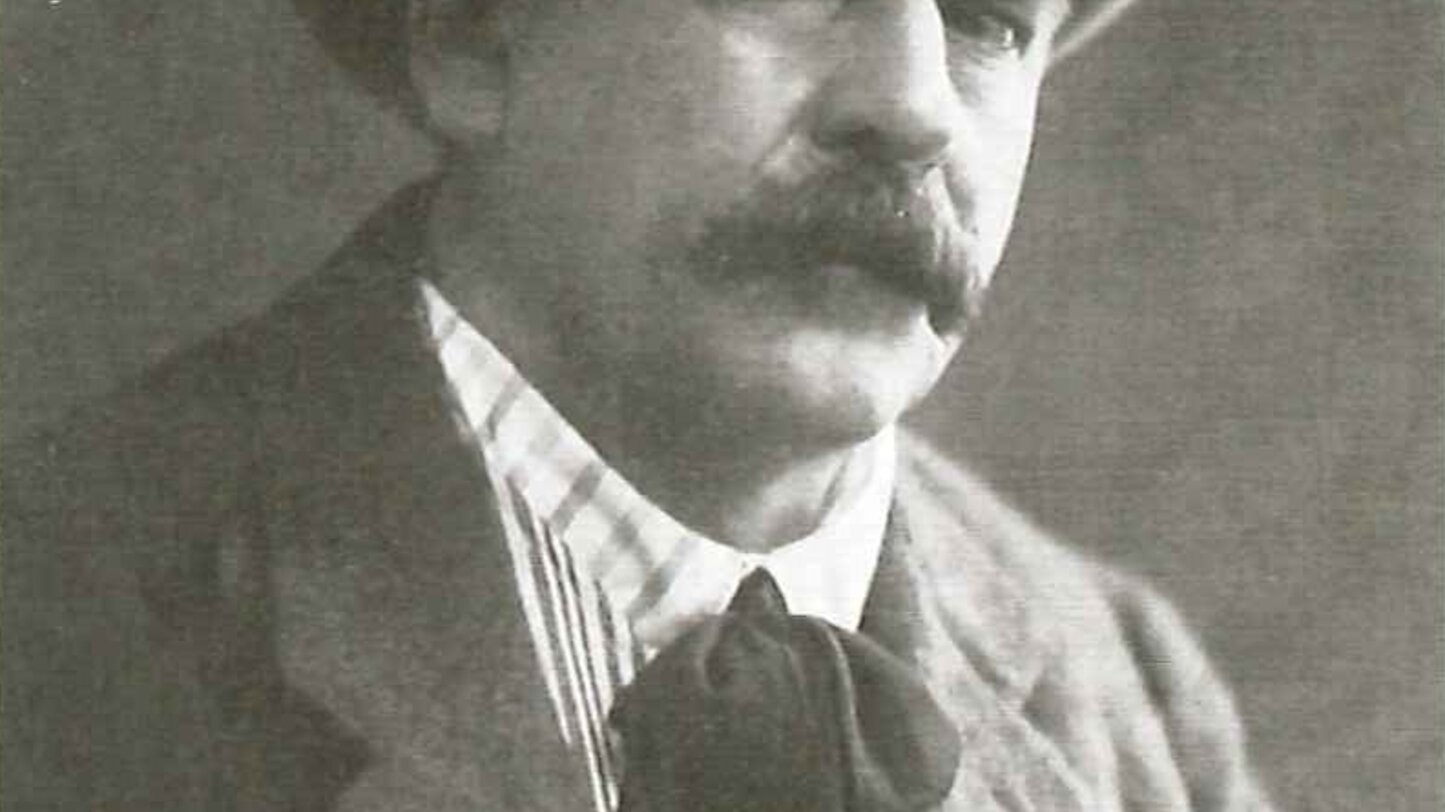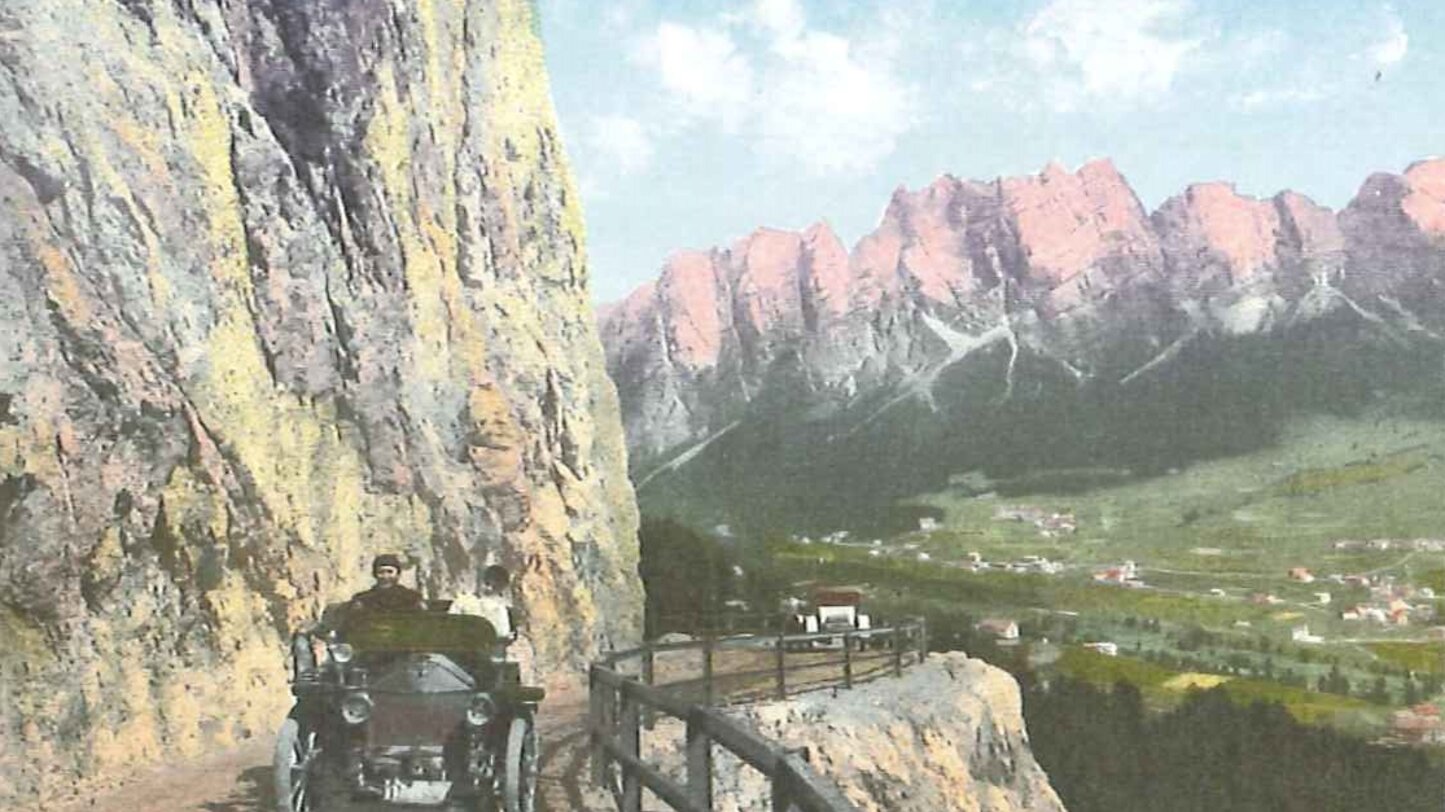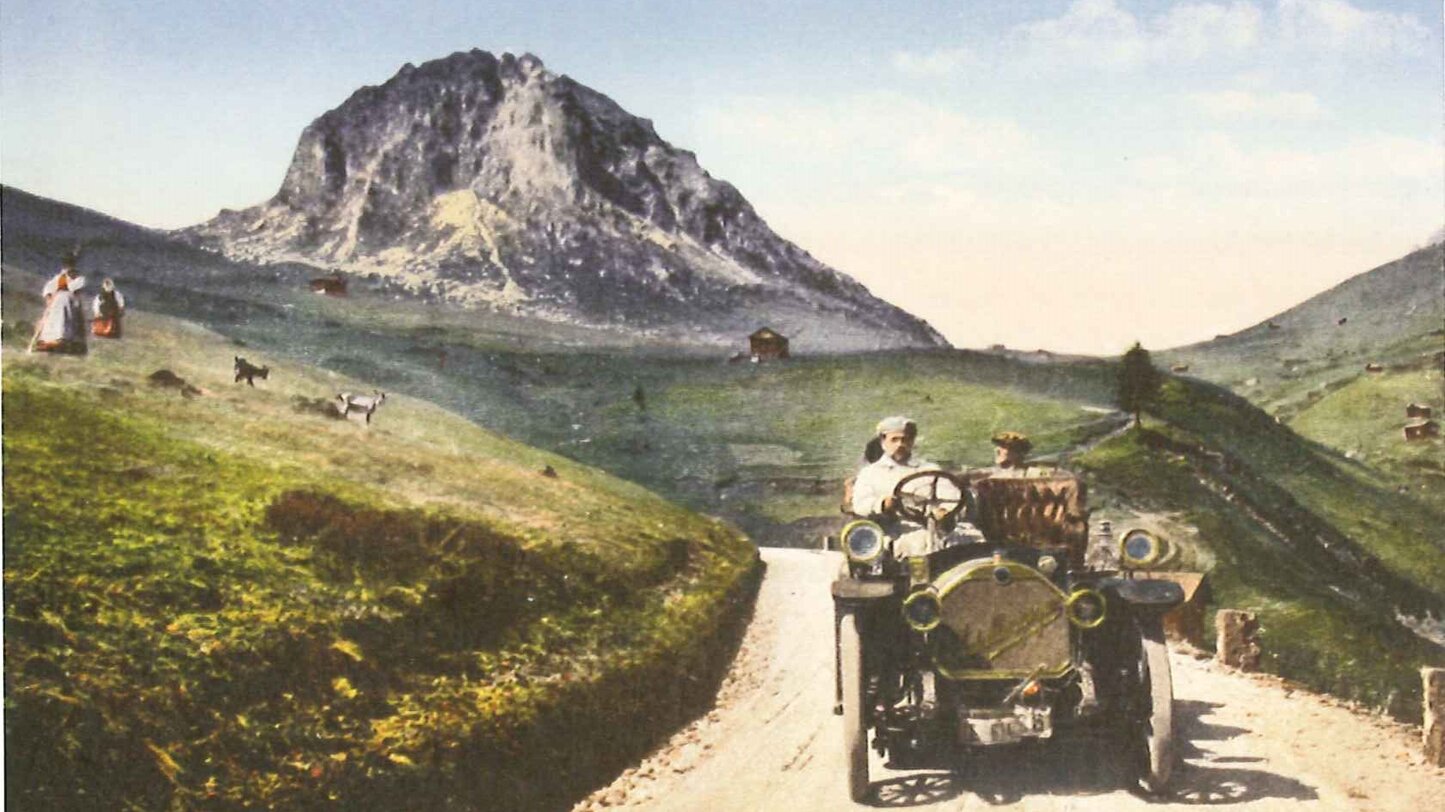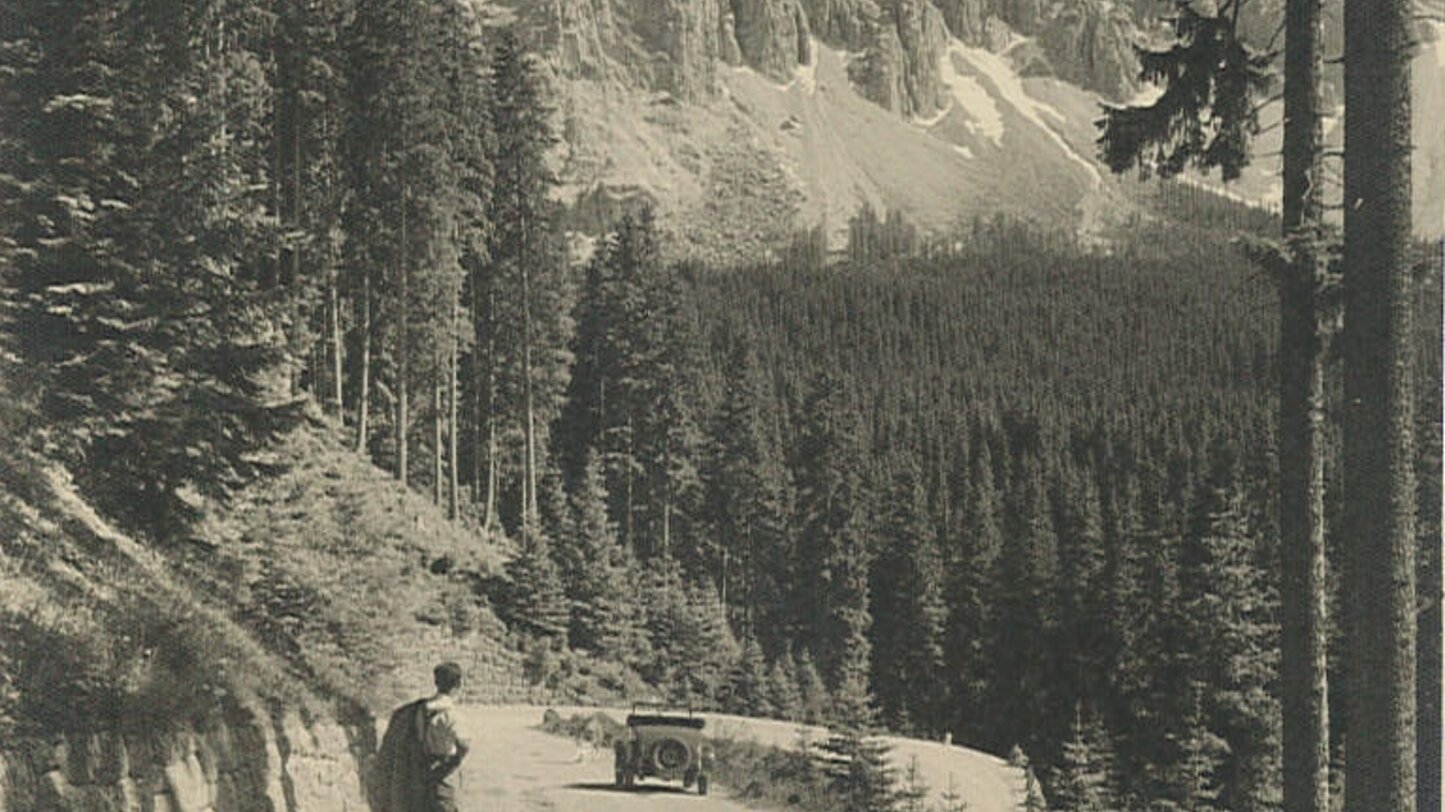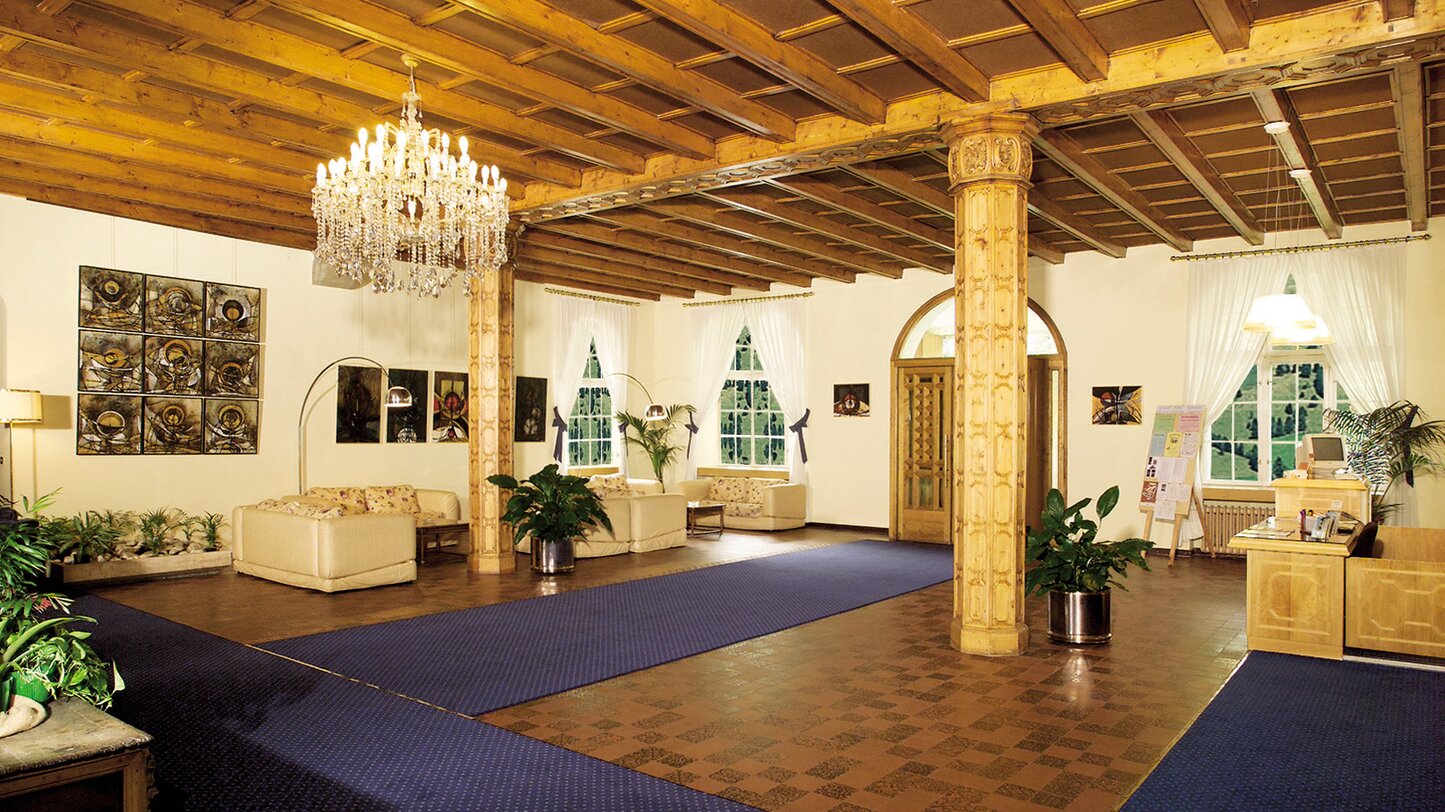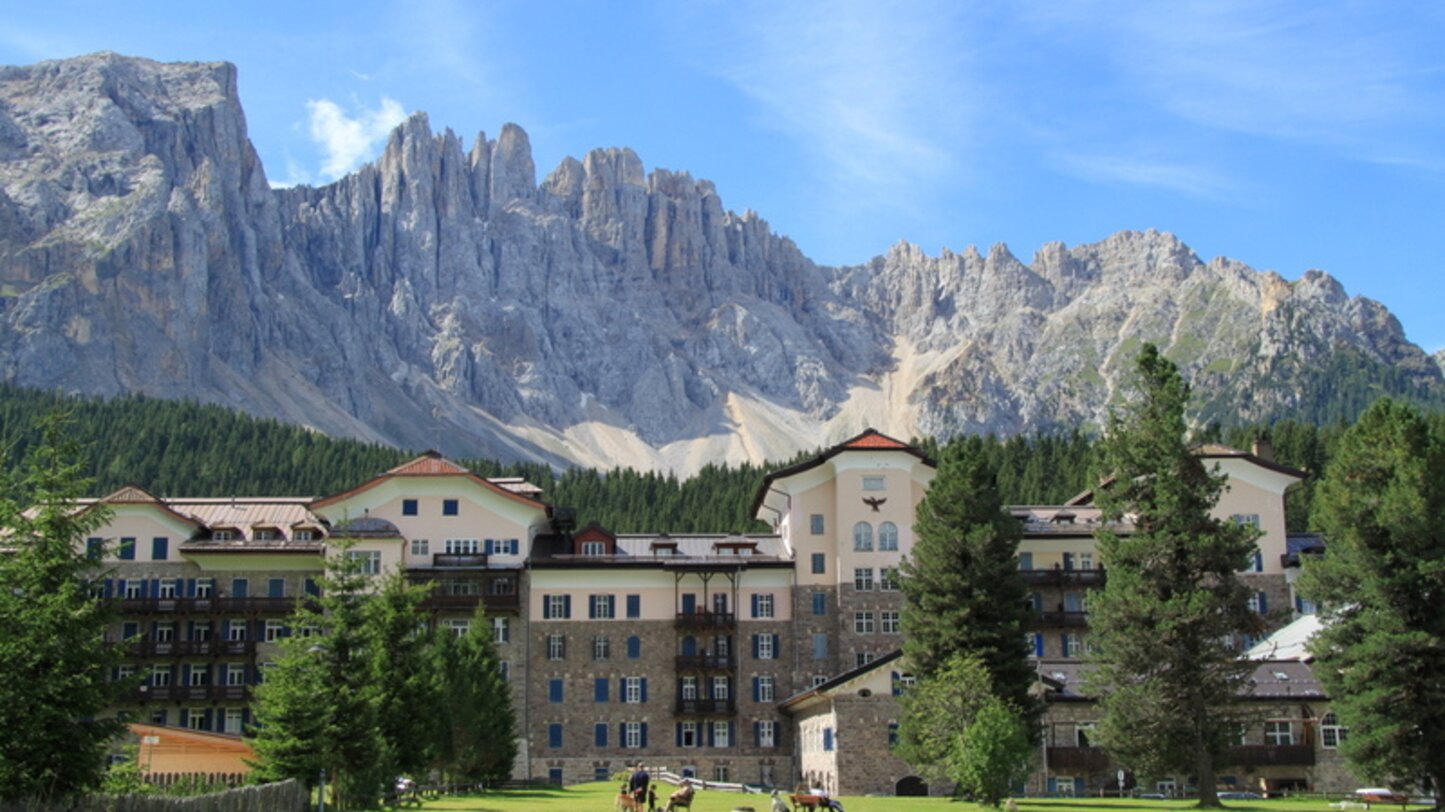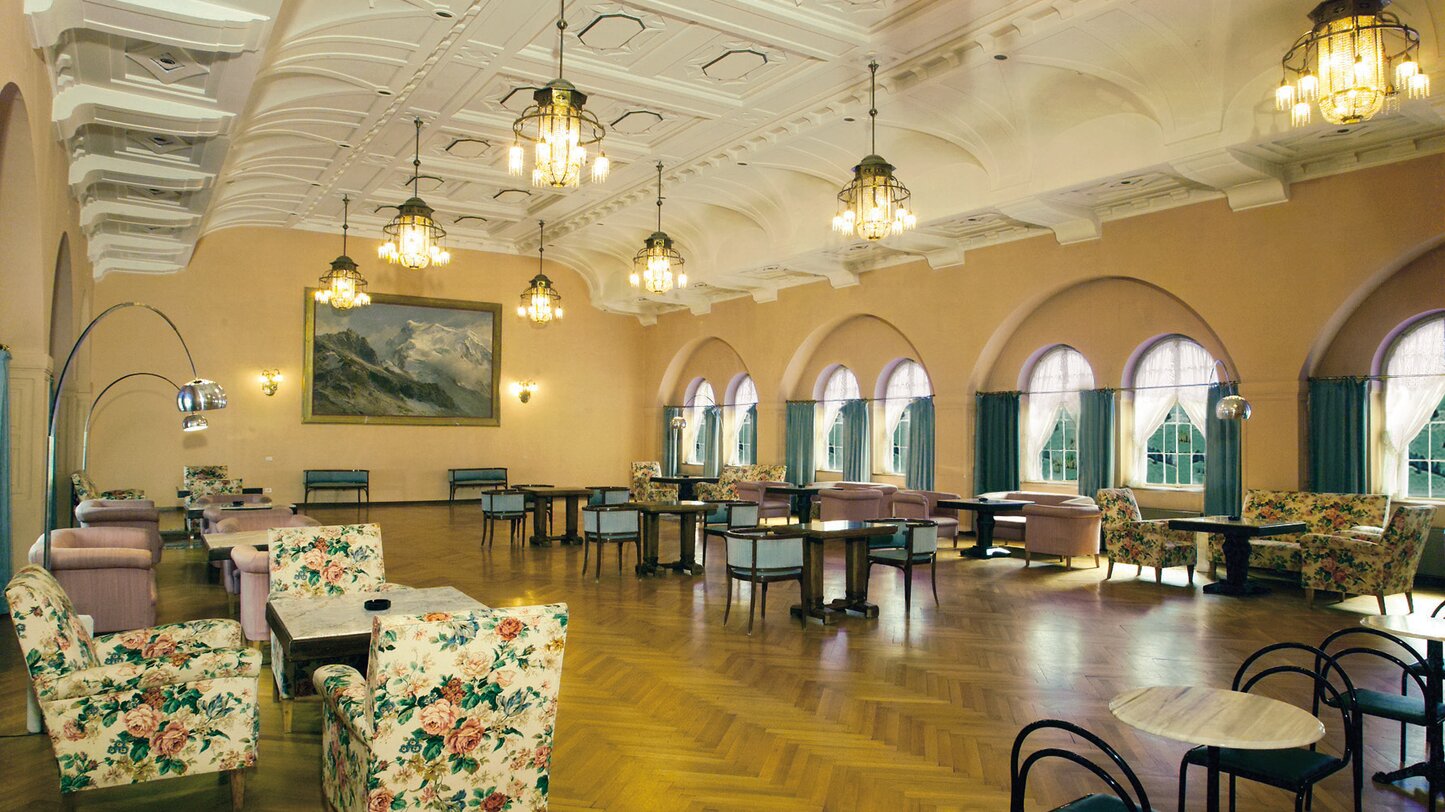A valley full of (hi)stories
Carezza, 1893. Swamps, thickets and the pristine, untamed nature of Val d’Ega dominate the landscape. Plans are underway to create the first building in Carezza with electricity, at 1,630 metres above sea level. The owner of the land, a man named Christomannos, tasks the architects Musch and Lun with completing this challenging project. The marshland is to be drained, a small power plant is to be built, and a sawmill must be erected on site together with a brickworks and several lime kilns. The workers also require accommodation to stay in for the duration of the project. Rock is mined nearby in a specially created porphyry mine.
Three years later the Grand Hotel Carezza opens its doors. As darkness falls, members of the Central European nobility gather as the windows are illuminated with electric lights – a spectacular sight at the time. One year later a chapel is added to the hotel, followed in the early 20th century by tennis courts, parks, meadows and a children’s play area. The Grand Hotel Carezza even becomes home to one of the first golf courses in the province of Alto Adige – today known as the Golfclub Carezza.
The hotel’s special flair and the opportunity to explore a previously inaccessible valley draw many of Europe’s most famous names to the shores of Lago di Carezza. In 1897 Empress Elisabeth of Austria-Hungary, better known as “Sissi”, stayed at the Grand Hotel. Further famous guests included Agatha Christie, Karl May (famous in the German-speaking world for his Winnetou books) and the Austrian author Arthur Schnitzler. Even former British prime minister Winston Churchill spent a holiday here with his wife – and captured the marvellous backdrop of the Dolomites in several of his paintings.
Turbulent times
15 August 1910. At 9:45 in the morning a huge fire breaks out in the Grand Hotel. Thankfully nobody is hurt, but the hotel is severely damaged. Just two years later the Grand Hotel Carezza is fully rebuilt in all its glory – and with a capacity of almost 500 beds it has space for even more guests than before the fire. During the First World War the hotel was used by the Austrian army as a command post – it was not until 1925 that it opened to guests once again. However, the tourism boom was once again cut short when the hotel was seized by the German army in 1943. Four years later it reopened to visitors.
Since then the Grand Hotel Carezza has become known throughout the region and beyond thanks to its turbulent history and key role in the development of tourism in Val d’Ega. Indeed, the fire of 1910 was the first recorded use by an automobile of another key element: the new road into the valley.
A path to the future
The history of the road is actually older than the history of the hotel. It was originally planned in 1859 by the engineer Franz Schweighofer and built in just eight months. The valley’s geology represented a major challenge which made the construction of the road anything but straight forward, but hard work and determination resulted in the creation of the first road to Val d’Ega and its most spectacular sight: the Dolomites. The newly created road was also important for transporting goods from the valley such as wood out to the nearby towns, where they could be sold. The construction of this main road into the valley was also the starting point for further roads to local villages such as Nova Levante and Nova Ponente as well as a connection across the Dolomites all the way to Cortina d’Ampezzo. The road was opened in 1861 and proved an immediate hit – both with local residents and visitors, who now had quick and direct access to the spectacular Dolomites.
Nevertheless, the steep terrain and extreme weather in the valley meant work was continually needed to keep the road open – mudslides, rockfalls and storms forced sections of the road to be moved on several occasions.
Automobiles in Val d‘Ega
After the fire in the Grand Hotel Carezza the local governor, a man by the name of Haymerle, drove his automobile to the hotel to inspect the damage – despite the fact that at the time the steep and very narrow route was officially closed to automated vehicles. This was also the case on the road through the Dolomites to Cortina d’Ampezzo. This ban on automobiles was lifted in 1911 after the foundation of several automobile clubs, whose members were keen to explore the region on four wheels. The road was opened to heavy goods vehicles in 1916/17. The road became particularly important in the First World War and was extended to connect with the Dolomites road to Cortina d’Ampezzo. The volume of traffic in the valley increased, requiring further work on the road to meet these new demands: many wooden bridges were replaced by stone constructions, the foundations of the road were strengthened, and the road was widened. Nevertheless, it wasn’t until the early 1930s that the first automobile was able to drive to the mountain village of Nova Ponente.
Traces and memories
The first road to Val d’Ega was therefore essential for the valley’s economy and tourism. Visitors to Val d’Ega today can still see traces of the region’s long and turbulent history. The Grand Hotel Carezza is today a holiday flat complex, where the historic dining room and indoor swimming pool have been preserved in all their glory. Golfers can tee off on the same spot where Europe’s nobility once raised their clubs to the sky. And the man who made it all possible back then is still honoured today in the “Christomannos theatre room” and the “Christomannos restaurant”.
By the way, Agatha Christie’s legendary detective Hercule Poirot also visited the region in the 1927 crime thriller “The Big Four”. :-)
Source:
“Die Eggentaler Straße”, Kathrin Eisath (Athesia-Tappeiner-Verlag)
